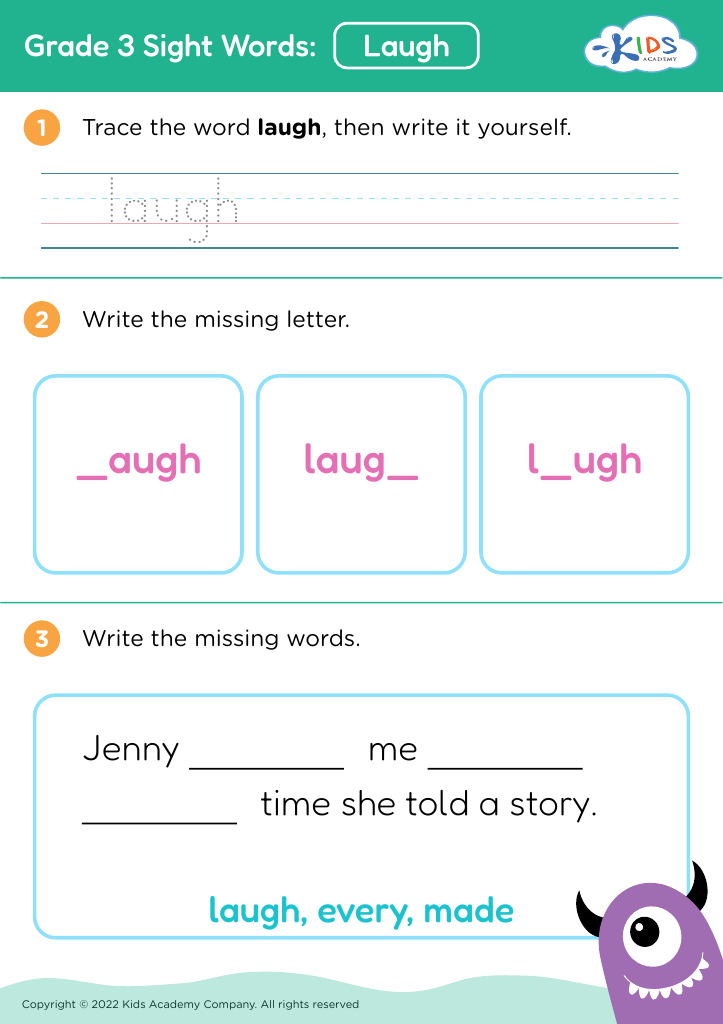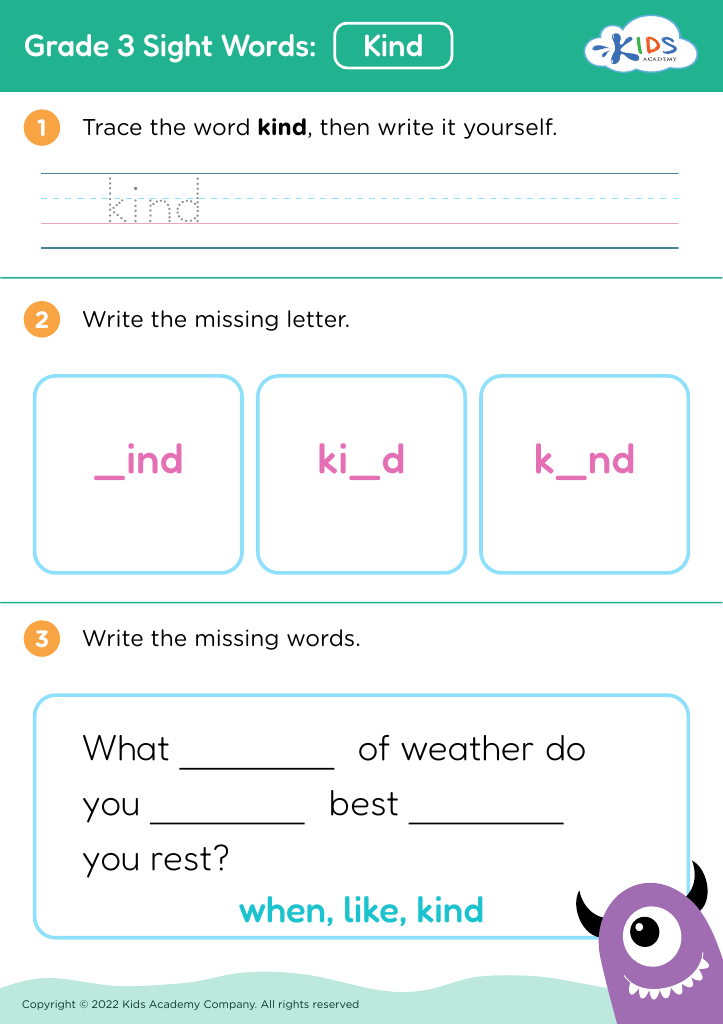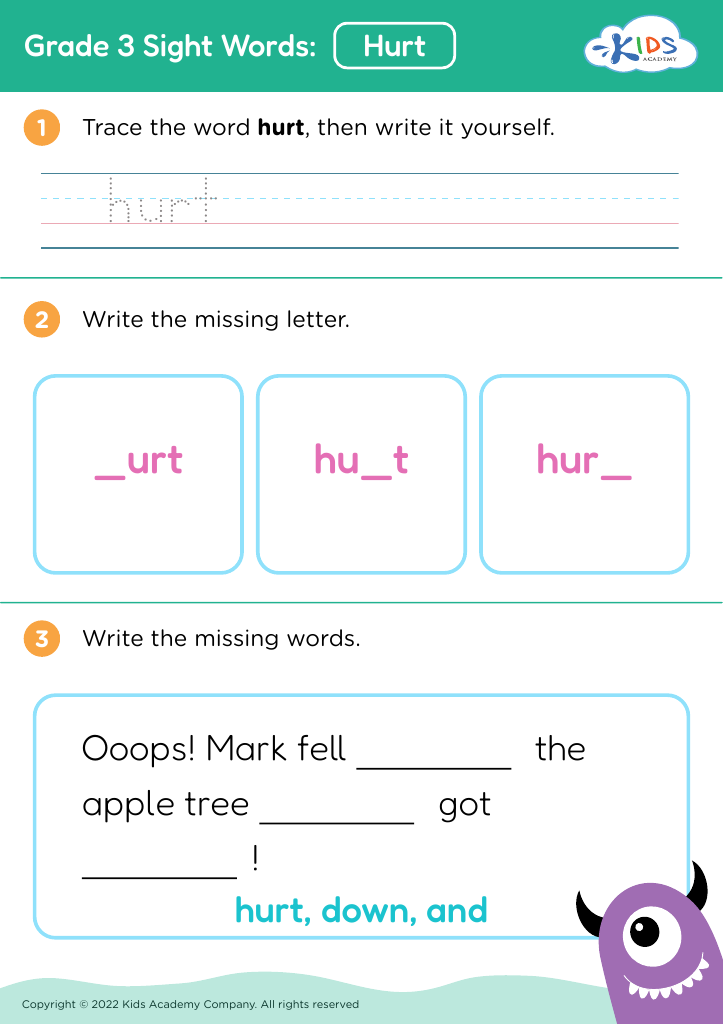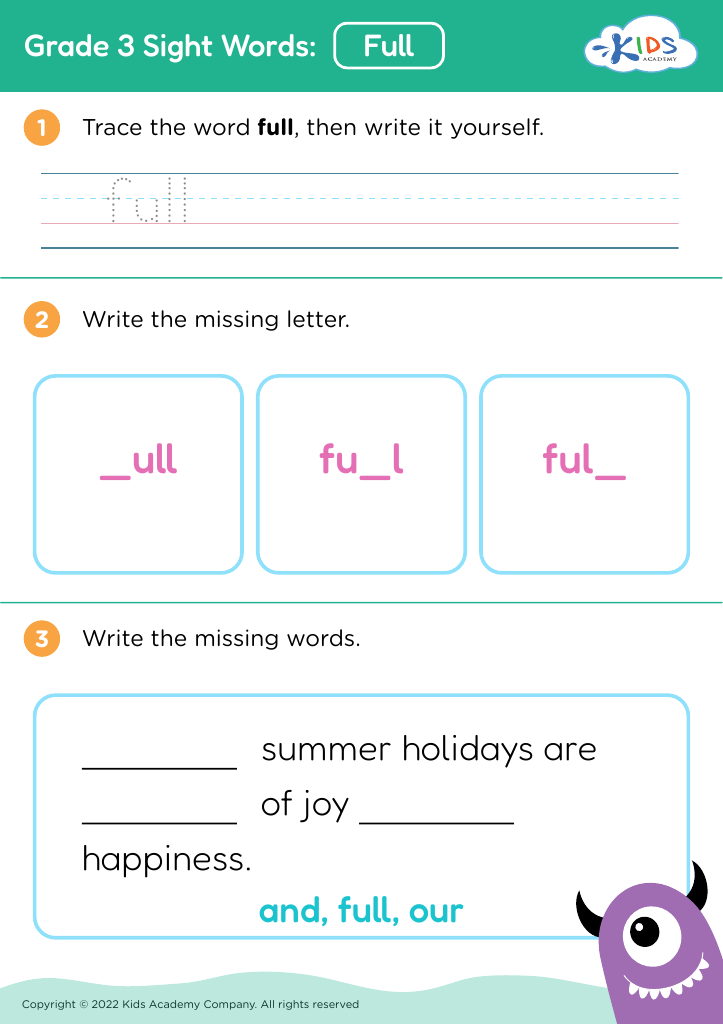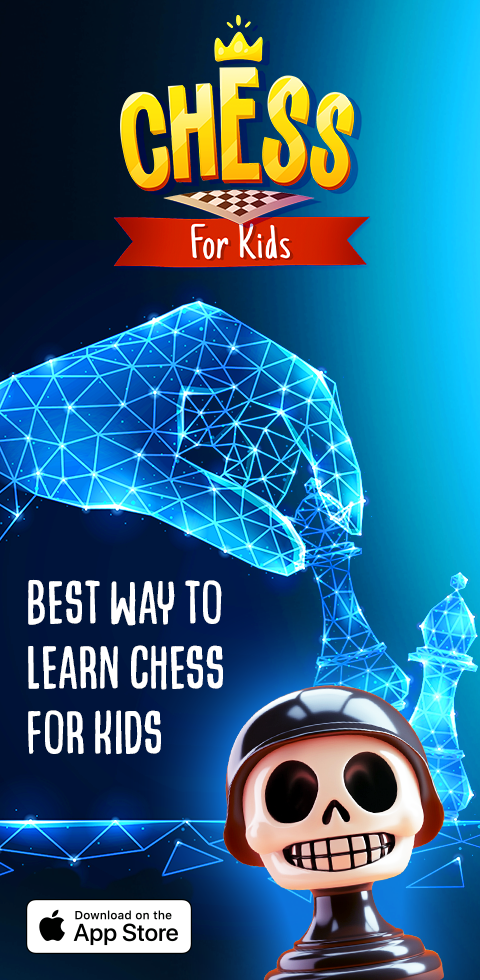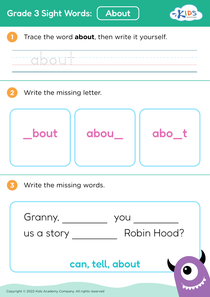Number Recognition Grade 3 Sight Words Worksheets
4 filtered results
-
From - To
Enhance your third grader's learning experience with our Number Recognition Grade 3 Sight Words Worksheets! These engaging and interactive worksheets are designed to help young learners seamlessly recognize numbers and sight words in context. Each activity encourages critical thinking and literacy skills while promoting numerical understanding. Perfect for reinforcing classroom lessons or as enjoyable homework assignments, these worksheets are tailored to maintain student interest and boost confidence. With visually appealing layouts and grade-appropriate challenges, children will improve their reading, writing, and mathematical skills in a fun and effective way. Explore our collection today and watch your child thrive in their educational journey!
Number recognition and sight words are fundamental components of early literacy and numeracy that greatly benefit Grade 3 students. For parents and teachers, fostering these skills is essential for several reasons.
Firstly, number recognition provides a vital foundation for mathematical understanding. As students progress, they encounter more complex operations and problem-solving tasks that require them to recognize and manipulate numbers quickly. This skill also translates into real-life situations, helping children understand quantities, time, and money management.
Simultaneously, sight words are crucial for reading fluency. At this stage, students should be transitioning from learning phonics to recognizing whole words, allowing for smoother and more confident reading. A robust sight word vocabulary enables children to focus their cognitive resources on comprehension rather than decoding, enhancing their overall language skills.
Moreover, both number recognition and sight words contribute to a child’s confidence in their abilities, which influences their enthusiasm for learning. When children can effortlessly identify numbers and words, they are more likely to participate and engage in classroom activities and discussions.
Ultimately, parents and teachers should prioritize emphasizing these foundational skills, nurturing a love for learning in young children while laying the groundwork for future academic success.
